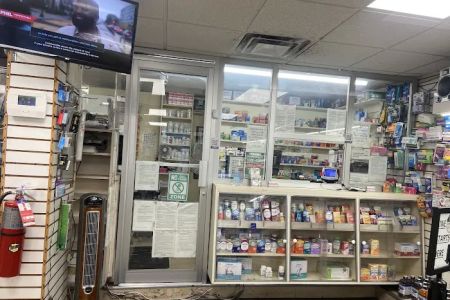Pharmacy Strategies for Reducing Medication Errors
Medication errors are a significant concern in the healthcare system, and pharmacies are at the forefront of addressing this issue. As a pharmacy professional, I’ve witnessed firsthand how even minor mistakes can have severe consequences on patients' health. Medication errors can occur at any stage, from prescription and dispensing to administration, and they can result in adverse drug events, extended hospital stays, or even death. This is why it's essential to implement effective strategies to reduce these errors and improve patient safety. In this article, I’ll share some of the most important pharmacy strategies for reducing medication errors and enhancing safety in healthcare.
1. Implementing a Robust Medication Management System
The first step in reducing medication errors is to ensure that a robust medication management system is in place. This involves using electronic health records (EHR) and pharmacy information systems that allow for accurate and efficient documentation of patient medications. The use of barcoding and automated dispensing systems helps to ensure that the right medication is given to the right patient. By automating the medication administration process, human error is minimized, and pharmacy staff can focus on other important tasks such as patient counseling and monitoring.
2. Promoting Patient Education and Communication
One of the most effective ways to prevent medication errors is by providing comprehensive patient education. Patients should be informed about the medications they are prescribed, including the correct dosage, potential side effects, and how to take the medication. In addition, open communication between pharmacists and patients plays a crucial role in identifying potential medication-related issues before they escalate. Encouraging patients to ask questions and clarifying any uncertainties can help prevent misunderstandings that lead to errors.
3. Regular Training and Continuous Education for Pharmacy Staff
Another key strategy in reducing medication errors is ensuring that pharmacy staff members receive regular training and continuous education. Pharmacists, pharmacy technicians, and other healthcare professionals should stay up-to-date with the latest guidelines, new medications, and evolving practices. By investing in ongoing education, pharmacies can foster a culture of safety, where staff are always aware of the best practices for medication dispensing and administration. Training on new technologies, systems, and processes can also help reduce errors caused by unfamiliarity with newer methods.
4. Double-Checking Systems and Verification Processes
Pharmacies should implement multiple layers of checks and verification processes before medications are dispensed to patients. A "two-person verification" process, where two pharmacy staff members independently verify prescriptions, can help reduce the risk of errors. Additionally, pharmacists should conduct thorough reviews of patients’ medication profiles before dispensing, especially in cases of polypharmacy, to identify potential drug interactions, allergies, or duplications in therapy.
5. Using Technology to Aid in Medication Reconciliation
Medication reconciliation is a critical process that ensures patients’ medication lists are accurate and up-to-date across different stages of care. Implementing technologies such as medication reconciliation software can help prevent errors when patients transition between healthcare settings, such as from hospital to home. The technology allows pharmacists to cross-reference medications and ensure that the prescribed medications do not conflict with what the patient was previously taking.
6. Establishing a Reporting and Feedback System
Encouraging staff to report medication errors or near-misses is an essential part of improving safety in pharmacies. An open reporting culture, where staff feel comfortable reporting errors without fear of punishment, helps to identify patterns and areas for improvement. Feedback from these reports can be used to refine policies, protocols, and procedures to prevent similar errors from happening again. By fostering a culture of accountability, pharmacies can create a safer environment for both patients and staff.
7. Enhancing Medication Storage and Handling Practices
Improper storage and handling of medications can lead to errors, particularly when medications are not stored at the correct temperature or are improperly labeled. Pharmacies should implement strict inventory management systems to ensure medications are stored properly and that expired or recalled medications are promptly removed. Additionally, organizing medications in a logical and systematic way can prevent confusion and reduce the chances of dispensing the wrong medication.
8. Collaborating with Other Healthcare Providers
Collaboration between pharmacists and other healthcare providers is crucial in reducing medication errors. Working closely with doctors, nurses, and other healthcare professionals ensures that patients’ medication regimens are coordinated and that any changes in therapy are communicated effectively. For example, pharmacists can review prescriptions for accuracy and suggest alternatives if necessary, while doctors can provide insight into the medical condition that influences the prescribed treatment plan.
In conclusion, reducing medication errors in pharmacies requires a multifaceted approach. By implementing technology, improving communication, training staff, and establishing thorough verification processes, pharmacies can significantly reduce the risk of errors. As healthcare professionals, we all have a responsibility to ensure patient safety and promote a culture of continuous improvement. By incorporating these strategies, we can make a meaningful impact on patient outcomes and contribute to safer healthcare practices.














